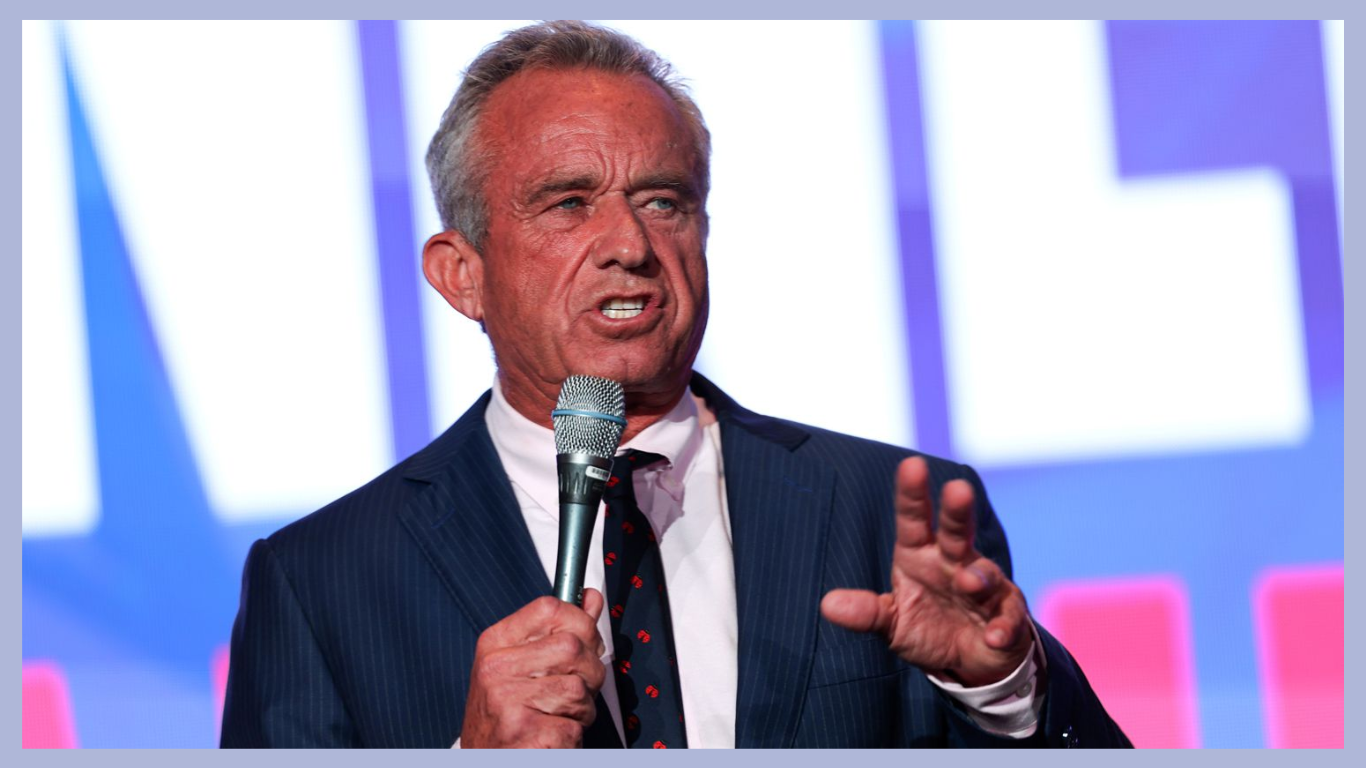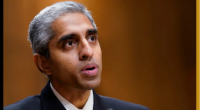Robert F. Kennedy Jr. has become a notable figure not only for his political lineage but also for his distinctive voice, which has been shaped by a rare neurological condition known as spasmodic dysphonia. In the meantime, let’s understand the major intricacies of this disorder, its impact on Kennedy’s life, and the broader implications for those affected by similar conditions.

The Impact of Spasmodic Dysphonia on Kennedy’s Life
Kennedy was diagnosed with spasmodic dysphonia at the age of 42, after experiencing a noticeable change in his voice. He described his voice as “unusually strong” prior to the onset of the disorder, which he first noticed while teaching at Pace University School of Law. The transition from a powerful voice to one marked by tremors and strain has been a source of personal and professional challenge for him. Despite the difficulties, Kennedy has continued to engage in public speaking and advocacy, often addressing the impact of his condition on his life and career.
Kennedy’s candid discussions about his voice have raised awareness about spasmodic dysphonia, a condition that affects approximately 50,000 people in the United States. Women are more frequently diagnosed than men, and the disorder typically manifests between the ages of 30 and 60.
What Is Spasmodic Dysphonia?
Spasmodic dysphonia (SD) is a chronic neurological speech disorder characterized by involuntary spasms of the laryngeal muscles, which interfere with normal vocal fold function. This disorder can cause the voice to sound breathy, strained, or shaky, leading to significant challenges in communication. The condition affects approximately 50,000 people in the United States, with a higher prevalence in women than men. Typically, symptoms manifest between the ages of 30 and 60, although it can occur at any age.
Symptoms and Diagnosis
Individuals with spasmodic dysphonia often experience a range of vocal symptoms, including:
- Hoarseness: A raspy or strained quality to the voice.
- Voice Breaks: Sudden interruptions in speech, making it difficult to maintain a steady flow.
- Tremors: A shaky quality to the voice, particularly noticeable during prolonged speech.
Diagnosis can be challenging, as symptoms may vary widely among individuals. A thorough evaluation typically includes a physical examination of the vocal cords and an assessment of speech patterns.
Causes and Risk Factors of Spasmodic Dysphonia
Spasmodic dysphonia (SD) is a complex voice disorder characterized by involuntary spasms in the muscles controlling the vocal cords, leading to a strained or disrupted voice. While the exact cause of this condition remains elusive, several factors contribute to its onset and prevalence. Understanding these causes and risk factors can provide insight into the disorder and aid in its management.
What Causes Spasmodic Dysphonia?
The precise etiology of spasmodic dysphonia is not fully understood. However, research suggests that it is primarily linked to dysfunction in the central nervous system, particularly involving the basal ganglia, which plays a crucial role in coordinating muscle movements. This dysfunction may lead to abnormal signals being sent to the muscles of the larynx, resulting in spasms during speech. Several potential triggers and contributing factors have been identified:
- Neurological Factors: Many experts believe that spasmodic dysphonia may be a type of focal dystonia, which is a neurological condition that causes involuntary muscle contractions. This condition can be associated with other movement disorders.
- Genetic Predisposition: There is evidence suggesting that a family history of neurological disorders may increase the risk of developing spasmodic dysphonia. Genetic factors could play a role in how the body processes neurological signals related to muscle control.
- Psychological Stress: Psychological stress has been noted as a potential trigger for the onset or exacerbation of symptoms. Stressful life events or ongoing anxiety can intensify the muscle spasms associated with the disorder.
- Viral Infections: Some studies indicate that upper respiratory infections or other viral illnesses may precede the onset of spasmodic dysphonia in susceptible individuals. This connection highlights the potential for environmental factors to impact the disorder.
- Voice Overuse: Prolonged or intense use of the voice, whether in professional settings or due to personal habits, may contribute to the development of spasmodic dysphonia. This is particularly relevant for individuals whose vocations require extensive vocalization.
Risk Factors for Spasmodic Dysphonia
Certain demographics and personal histories may increase the likelihood of developing spasmodic dysphonia:
- Gender: Research indicates that women are more frequently diagnosed with spasmodic dysphonia than men, suggesting a possible hormonal or biological component to the disorder.
- Age: The onset of spasmodic dysphonia typically occurs between the ages of 30 and 50. This middle-aged demographic may be more vulnerable due to a combination of factors, including lifestyle and physiological changes.
- Family History: A personal or family history of neurological disorders, such as tremors or dystonia, can increase the risk of developing spasmodic dysphonia. This suggests a genetic component that warrants further investigation.
- Previous Illnesses: Individuals with a history of certain illnesses, such as mumps or other viral infections, may have a higher risk of developing spasmodic dysphonia. Additionally, those who have experienced cervical dystonia may also be at increased risk.
- Environmental Factors: Exposure to environmental stressors, including heavy voice use or psychological stressors, can trigger or worsen symptoms in predisposed individuals.
Treatment Options
While there is currently no cure for spasmodic dysphonia, various treatment options can help manage symptoms:
- Botox Injections: The most common treatment involves injecting botulinum toxin into the affected laryngeal muscles. This procedure helps to relax the muscles and improve voice quality, typically requiring reinjection every three to six months.
- Speech Therapy: Although not effective for everyone, some individuals find relief through tailored voice therapy, which can help reduce vocal strain and improve communication techniques.
- Surgical Interventions: For those who do not respond to other treatments, surgical options such as thyroplasty or selective laryngeal adductor denervation-reinnervation (SLAD-R) may be considered. Recently, Kennedy underwent a novel surgical procedure in Japan, which involved the implantation of titanium to stabilize his vocal cords.
Living with Spasmodic Dysphonia
Living with spasmodic dysphonia can be challenging, particularly for individuals like Robert F. Kennedy Jr., who rely on their voices for public speaking and advocacy. Kennedy has openly discussed the emotional toll of the disorder, expressing discomfort with hearing his voice on television. He has emphasized the importance of seeking support and exploring various treatment modalities to manage symptoms effectively.

Expert Recommendations
Healthcare professionals often advise individuals with spasmodic dysphonia to:
- Engage in Regular Therapy: Consistent speech therapy can help develop coping strategies and improve vocal function.
- Explore Support Groups: Connecting with others facing similar challenges can provide emotional support and practical advice.
- Prioritize Self-Care: Managing stress and maintaining overall health can play a significant role in symptom management.
FAQs
Q: Can spasmodic dysphonia be cured?
A: Currently, there is no cure for spasmodic dysphonia, but treatments can help manage symptoms effectively.
Q: Is spasmodic dysphonia hereditary?
A: While the exact cause is unknown, there may be a genetic component, as some cases appear to run in families.
Q: How does spasmodic dysphonia affect daily life?
A: The disorder can significantly impact communication, leading to frustration and social withdrawal for some individuals.
Q. How common is spasmodic dysphonia?
A. Approximately 50,000 people in the United States are affected, with a higher prevalence in women.
Conclusion
Robert F. Kennedy Jr.’s experience with spasmodic dysphonia highlights the complexities of living with a vocal disorder. Understanding the nature of this condition, its symptoms, and available treatments can empower those affected to seek appropriate care and support. As research continues, there is hope for improved management strategies and a better quality of life for individuals with spasmodic dysphonia.
Also Read | How Chronic Sinus Infections Led to Aaron Agler’s Cancer Diagnosis







